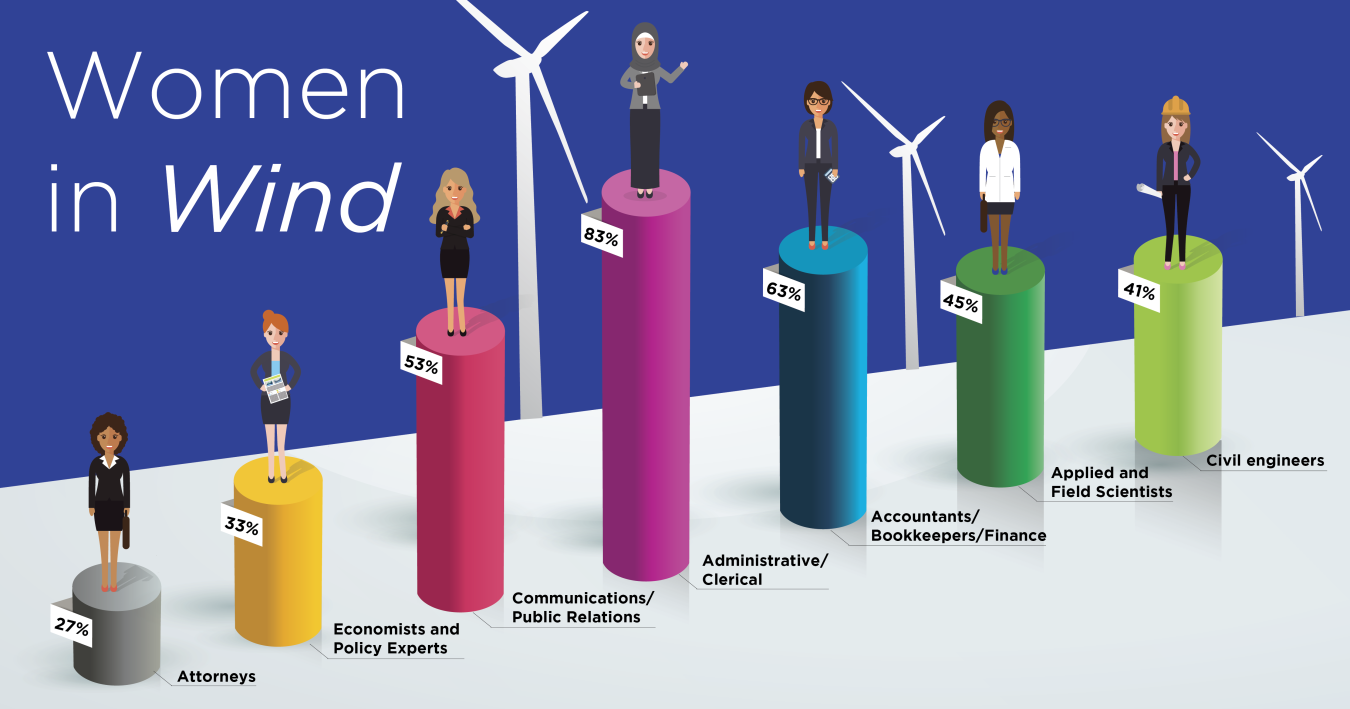Women working in the wind industry are on the rise.
Office of Energy Efficiency & Renewable Energy
June 15, 2017Women working in the wind industry are on the rise.
Wind power is the number one source of renewable energy generating capacity in the country, and has made substantial gains over the last 5 years. In 2016 alone, the industry added more than 20,000 new jobs and now employs 102,000 Americans in all 50 states.
According to a recent U.S. Department of Energy employment report, women make up 32% of that figure.
Kristen Graf, executive director of Women of Renewable Industries and Sustainable Energy (WRISE), believes women in wind energy are making a difference.
“Teams of any kind do better when they are more diverse—full of different ideas, perspectives, backgrounds and talents,” she said. “A piece of that diversity is having more women in the mix, and right now, in the renewable energy space, we need more women in all roles and at all levels to help drive toward the kind of success we are capable of and know we need.”

Photo Credit | Sarah Harman
With that in mind, here are seven of the most popular jobs for women, broken down by female percentage in the wind workforce:
Perform clerical and administrative duties, such as organizing files, preparing documents, and scheduling appointments.
Accountants/Bookkeepers/Finance (63%)
Record financial transactions, update statements, and check financial records for accuracy. Also provide bookkeeping, accounting, and auditing.
Communications/Public Relations (53%)
Create, edit, translate, and disseminate information through a variety of different platforms.
Applied and Field Scientists (45%)
Work with wind farm developers to ensure a site is suitable for development. After the site is selected, environmental scientists and biologists then help the developer comply with environmental regulations and policies to ensure that physical and wildlife sensitivities, as well as cultural impacts, are mitigated.
Design and supervise large construction projects, including wind farm foundations, access roads, support buildings, and crane paths and pads. Because of the scale of wind turbines, these engineers deal with some atypical problems, such as designing roads that can withstand very heavy loads as well as trailers that are up to 100 feet long.
Economists and Policy Experts (33%)
Economists study the production and distribution of resources, goods, and services by collecting and analyzing data, researching trends, and evaluating economic issues. Policy experts research and advise on various policy issues within the energy industry.
Attorneys (27%)
Advise and represent individuals, businesses, or government agencies on legal issues or disputes. Attorneys work within each sector of the wind industry, leading and supporting contract negotiations and execution, financing and confidentiality agreements, patents and intellectual property filings, mergers and acquisitions, and legal compliance.
Wind is Working
A recent study from Navigant Consulting predicts that the U.S. wind industry will drive more than $85 billion in economic activity over the next 4 years, with employment to reach 248,000 jobs in all 50 states by 2020. This is partially due to the multi-year extension of the production tax credit in 2015, which will enable the development of 35 gigawatts of wind power capacity across the country between now and 2020.
Of the approximate projected 248,000 jobs, Navigant expects:
- 33,000 Americans to be working in wind manufacturing facilities,
- 114,000 to be building, operating, and maintaining wind turbines (currently wind technicians are reported to be the fastest growing job in America), and
- 102,000 workers in other jobs supporting the industry.
With numbers like this, it seems the wind industry is moving on up.
To learn more about wind industry careers and what is required to move into or move within the industry, see the Office of Energy Efficiency and Renewable Energy’s wind career map.

